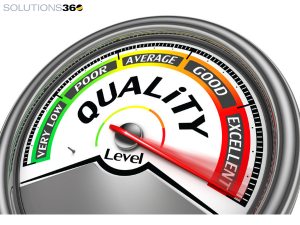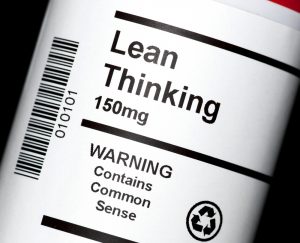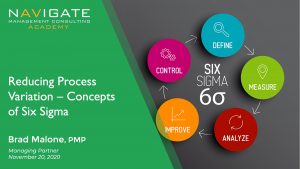Navigate has worked with hundreds of AV and Systems Integration companies, and one thing that continues to amaze us is the difference in process maturity between companies – and the results.
There are several areas where you can distinguish mature and immature companies – especially in their approach to first-time quality.
Based on years of observation, here are three ways Navigate sees successful integrators build quality into projects and their processes.
Identify and Manage the Costs of Quality
 What are the Costs of Conformance (costs to do something correctly) and the Costs of Non-Conformance (the costs to repair or redo internally, the costs of lost or irritated customers, and the costs of lost opportunities)?
What are the Costs of Conformance (costs to do something correctly) and the Costs of Non-Conformance (the costs to repair or redo internally, the costs of lost or irritated customers, and the costs of lost opportunities)?
Leading integrators build quality into the design process and spend effort in the early stages of a project to meet the quality requirements of not only their external customers but also all those internal downstream functions (Project Managers, Technicians, Procurement, Warehouse, Service, etc.).
When integrators standardize processes regarding equipment listings, design standards and estimating, it makes it possible to focus on quality from the beginning stages of a project through to its completion.
Get Lean
 Getting lean involves getting the waste out of the processes and the company “system” as a whole.
Getting lean involves getting the waste out of the processes and the company “system” as a whole.
Remember, every dollar and hour saved go directly into net profit. Every hour saved can also be used for another opportunity.
The opposite is also true for every hour wasted. Not taking 5 minutes to do something right up front often causes 40 – 50 hours of wasted effort downstream – which eliminated a lot of opportunities.
Does your integration business have a process flow chart? Have you ever done a deep dive into the key hand-offs across functions, ensuring the deliverables meet the quality requirements of the internal “customer”?
Building these quality deliverables into the process saves downstream effort – and these effort savings equal increased profits and increases in the capacity of the labor force to do more projects with the same or fewer people.
Getting lean helps to create a value stream instead of a waste / drama cycle.
“Any task that is repeatable can be standardized, measured, and improved upon.” Brad Malone
Continuous Improvement (Kaizen)
Within all integration businesses, there is the opportunity to standardize and “learn and apply” the lessons learned from completed projects. A mature company creates efficiencies – learning from each project instead of having to “relearn” again and again – each project receiving the benefits from the lessons the previous project already paid for, instead of having to pay again.
Another key incremental learning opportunity is the measurement of estimating (effort) variances – from the initial estimate through to scheduling to time tracking to WIP (Work In Progress) reporting to project closeout and variance analysis.
The best companies are diligent in learning from an “apples to apples” structure with everyone using the same data to create meaningful information.
Mature companies “own” their process and their results.
Conclusion
Focusing on these three inter-related areas of mature Quality Management is a way to increase the quality of your integration project.
This article comes from our partners at Navigate Management Consulting, and has been republished with their express permission.
Read the original story here – 3 Ways to Build Quality into Integration Projects.
Join Navigate Academy!
Don’t miss the next live webinar
Friday, Nov 20 @ 11:00 am CST
Title: Reducing Process Variation – Concepts of Six Sigma
Solutions360 is a proud sponsor of Navigate Academy
Handpicked Related Content:
Handpicked Related Content:




